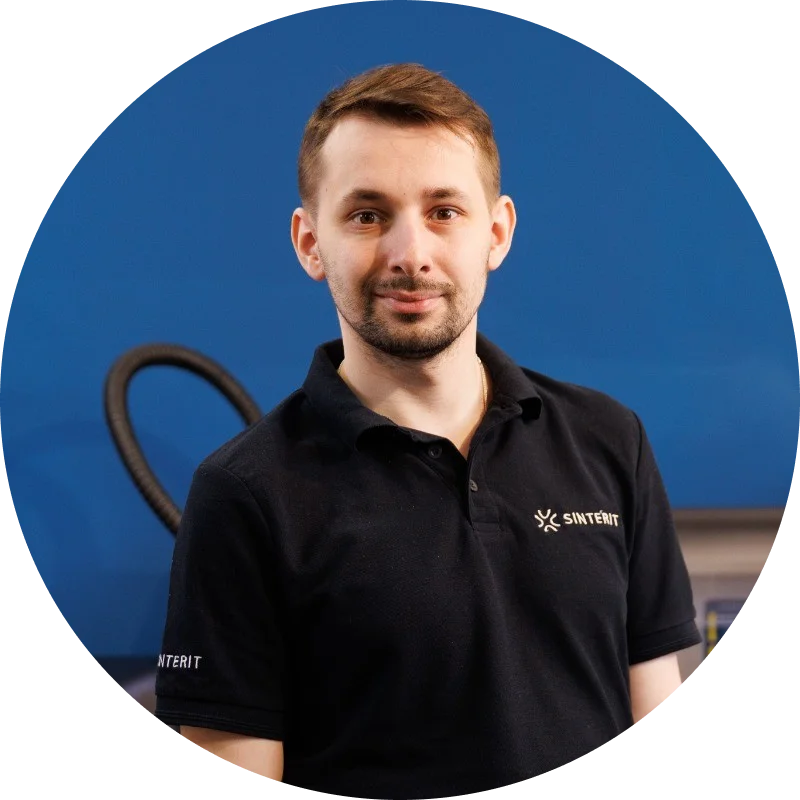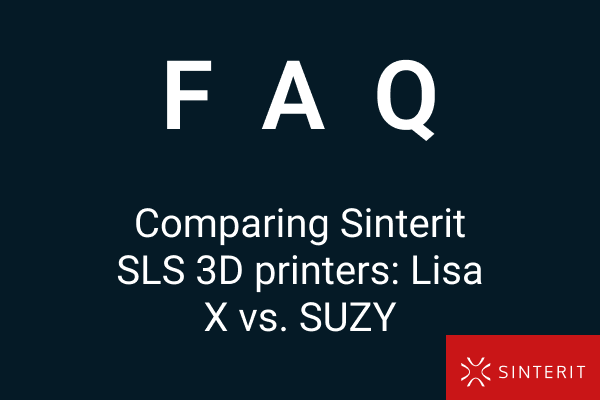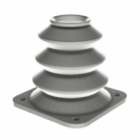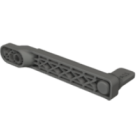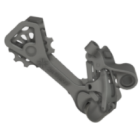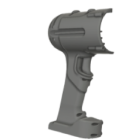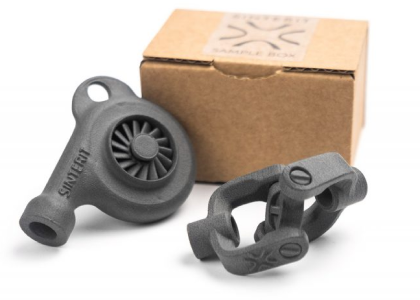Calculating the cost of conditioning used MJF powder for SLS printing on Lisa X
As additive manufacturing continues to push the boundaries of efficiency and sustainability, more and more companies are looking for smart ways to cut costs without sacrificing part quality. One promising area of innovation is powder reuse — specifically, repurposing used PA12 powder from Multi Jet Fusion (MJF) processes for Selective Laser Sintering (SLS) on open-platform printers like the Sinterit Lisa X.
While the benefits of powder reuse — reduced material waste, lower costs, and improved sustainability—are clear, many businesses are unsure how to quantify the full cost of this process. In this article, we’ll explore how to calculate the cost of conditioning used MJF PA12 powder to be reused in SLS printing on the Lisa X, based on real-world data and example scenarios.
Why use MJF powder in SLS?
MJF technology, like that used in HP’s Jet Fusion 4200/5200 series, can generate a significant amount of excess powder after every print. This leftover material, often called used powder, still retains physical and chemical properties suitable for sintering, but is typically discarded due to process-specific reuse limitations in MJF workflows.
With a more flexible SLS system like the Lisa X, which allows for open material inputs and custom profiles, this used powder can be successfully reconditioned and reused — significantly improving resource efficiency. But doing so requires effort: mixing additives, sifting, and properly storing the powder to ensure consistent print quality.
So what does this process actually cost?
Core cost factors
The cost of reconditioning used MJF powder for SLS depends on several factors:
- Powder quantity used monthly
- Carbon additive dosage
- Labor
- Print volume and frequency
- Powder value recovery
Let’s walk through each of these, using example figures extracted from a spreadsheet analysis designed to simulate a Lisa X running regular print jobs using refreshed HP PA12.
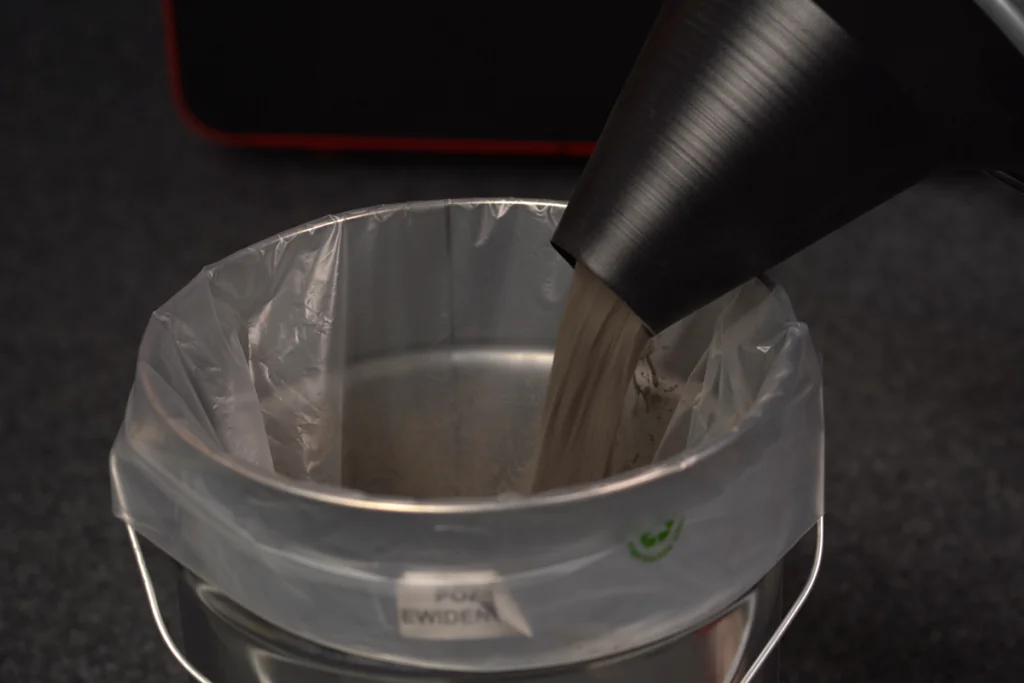
Monthly powder consumption
The monthly powder consumption for a Lisa X printer depends heavily on the type of prints a user plans to produce. Part size, density, nesting strategy, and print frequency all impact material use. The most accurate way to estimate your powder requirements is to prepare a build in Sinterit Studio, generate the slice file, and then copy the material usage data into our cost calculator spreadsheet. A link to this calculator is provided at the end of the article.
Based on field data from our partners, the maximum realistic powder usage per month for one Lisa X is approximately 50 kg when working with high-quality HP used PA12 powder, and up to 75 kg when using powder in worse condition (which typically requires more volume to achieve consistent results). These figures offer a useful benchmark when evaluating potential throughput and reconditioning costs.
Carbon additive requirements
To refresh used HP PA12 powder for SLS, a carbon additive is blended into the material to improve flowability, consistency, and sintering behavior. The recommended dosage is 7 grams of carbon per kilogram of powder, but the total amount needed will naturally depend on how much powder you plan to process monthly.
Just like with powder estimation, the exact carbon requirement can be calculated using Sinterit Studio and our downloadable calculator. Once you slice your print in Sinterit Studio, copy the estimated powder usage into the calculator, and it will automatically compute the amount of carbon needed based on the 7 g/kg ratio.
From field experience, reconditioning 50–75 kg of used HP PA12 per month would require approximately 350–525 grams of carbon. This relatively small additive investment plays a crucial role in ensuring the successful reuse of powder that would otherwise be discarded.
Labor considerations
While material costs are the core of the powder refresh process, labour time also plays a role in the overall cost structure. Conditioning one full 8 kg batch of used HP PA12 typically takes around 2 hours total, but it’s important to note that 1.5 hours of this time is spent mixing in the CADmix II, during which the operator is not actively involved and can perform other tasks.
This means that the actual hands-on labour time is closer to 30 minutes per batch. At an average technician rate of €20–30 per hour, the effective labour cost per batch comes down to approximately €10–15, or €1.25–1.90 per kilogram of refreshed powder. This minimal labour input — combined with the high material value recovered — makes the process highly efficient and economically viable, especially in production environments where multitasking is standard practice.
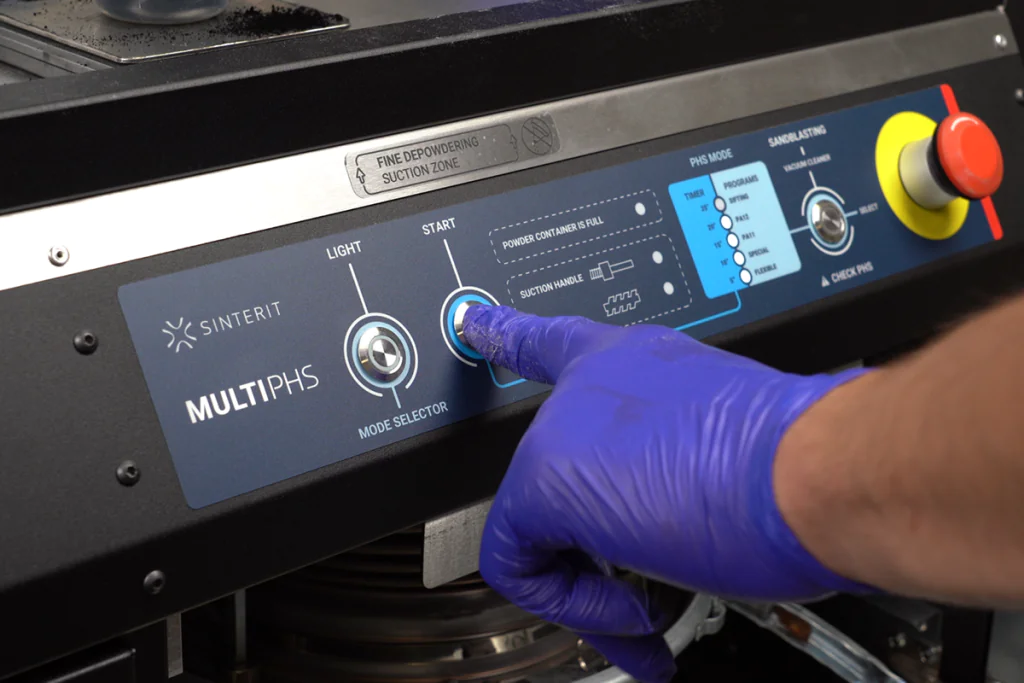
Hidden benefits
In addition to direct savings, there are several secondary benefits to reusing MJF powder on Lisa X:
- inventory optimization: used MJF powder becomes a valuable resource instead of a liability,
- sustainability: reduction in waste disposal aligns with ESG goals,
- cross-machine ROI: if your operation already runs MJF systems, this approach makes use of otherwise idle materials—boosting the ROI of both machines,
- open-material flexibility: Sinterit’s Lisa X allows fine-tuning of material parameters, ensuring good results even with non-standard powder inputs.
Limitations to keep in mind
Of course, this process isn’t without caveats.
- Powder quality declines over time. Even with additives, reused powder can only cycle so many times before degradation becomes a risk.
- Process control is key. Poorly mixed batches or improper sifting can lead to failed prints.
- Storage matters. Humidity or contamination can ruin a batch—airtight, dry conditions are essential.
However, with discipline and proper tools, these risks are manageable—and easily outweighed by the benefits.
Final thoughts
Conditioning used MJF powder for Lisa X printing is not only feasible — it’s also economically sound. With per-kilo costs below €4.20 (including carbon and labor), this method enables small and mid-size operations to remain competitive without sacrificing quality.
Better yet, the process can be partially automated using tools like the CADmix II, minimizing the labor burden. Combined with the environmental advantages of material reuse, conditioning MJF powder represents a smart, sustainable strategy for long-term 3D printing success.
If you’d like to calculate your own scenarios, download the full spreadsheet and input your specific model volumes, print cycles, and labor rates.
FAQ: the cost of conditioning used MJF powder for SLS printing on Lisa X
Reconditioning used MJF PA12 powder allows users to repurpose leftover material from HP’s Multi Jet Fusion processes, significantly reducing material waste and printing costs. The reconditioned powder can be successfully used in open-platform SLS printers like Sinterit’s Lisa X while maintaining part quality and mechanical integrity.
Based on field data, a single Lisa X printer can consume up to 50 kg per month of high-quality used PA12 powder, and up to 75 kg per month if working with powder of lower condition that requires more volume. These figures serve as practical benchmarks for estimating monthly powder needs and reconditioning costs.
The recommended dosage is 7 grams of carbon additive per 1 kilogram of used powder. For monthly usage, this translates to approximately 350–525 grams of additive for 50–75 kg of powder. This additive restores flowability and thermal consistency, ensuring reliable print outcomes on the Lisa X.
Conditioning one 8 kg batch of powder typically takes about 2 hours total, but only 30 minutes is actual hands-on time. The remaining 1.5 hours—such as mixing in a Cadmix II—can be used for other tasks. At an average hourly wage of €20–30, labor costs per batch range between €10–15, or around €1.25–1.90 per kilogram.
When combining labor and carbon additive costs, the estimated total cost per kilogram of refreshed MJF powder is less than €4.20. This is substantially lower than the cost of virgin PA12 powder, making reuse an economically attractive option for many operations.
No special hardware modifications are needed. Lisa X’s open-material architecture allows full access to material settings, which makes it highly compatible with reconditioned powders. Users can tweak sintering profiles to adapt to the specific behavior of reused materials.
Main risks include powder degradation, poor mixing, and moisture contamination. These can be mitigated through proper batch control, precise additive blending, regular sifting, and storing powder in airtight containers with humidity below 20%. Using tools like Cadmix II improves consistency and reduces error.
Yes. By giving new life to what would otherwise be waste material, reconditioning MJF powder supports circular economy goals and ESG initiatives. It also reduces reliance on new raw materials and helps companies minimize landfill contribution.
Secondary benefits include: inventory optimization (turning excess MJF powder into usable stock), higher ROI on MJF systems through cross-technology synergy, less material disposal, simplifying waste management, greater operational flexibility in research and prototyping.
Sinterit provides a downloadable cost calculator spreadsheet. After preparing your print in Sinterit Studio, you can input slice file data, powder volumes, and labor rates to generate customized cost projections. This helps you model different scenarios with precise financial insight.
The Cadmix II is a high-speed powder mixer used for homogenizing used PA12 with additives. It automates much of the conditioning process, reduces manual labor, and ensures even blending—leading to more reliable print results and lower overall effort per batch.
Yes — with proper process control. While each powder cycle eventually leads to some degradation, consistent monitoring and additive use can extend powder life through several reuses. Combined with Lisa X’s parameter flexibility, this supports sustainable long-term printing strategies.
Discover more: how to reuse MJF PA12 in SLS printing on Lisa X.
 Austria
Austria  Bosnia and Herzegovina
Bosnia and Herzegovina  Bulgaria
Bulgaria  Croatia
Croatia  Czech Republic
Czech Republic  Denmark
Denmark  Estonia
Estonia  Finland
Finland  France
France  Germany
Germany  Greece
Greece  Hungary
Hungary  Ireland
Ireland  Italy
Italy  Latvia
Latvia  Lithuania
Lithuania  Poland
Poland  Portugal
Portugal  Romania
Romania  Slovakia
Slovakia  Slovenia
Slovenia  Spain
Spain  Sweden
Sweden  Switzerland
Switzerland  United Kingdom
United Kingdom  Ukraine
Ukraine  China
China  Hong Kong
Hong Kong  India
India  Israel
Israel  Japan
Japan  Malaysia
Malaysia  Philippines
Philippines  Saudi Arabia
Saudi Arabia  South Korea
South Korea  Taiwan
Taiwan  Thailand
Thailand  Turkey
Turkey  United Arab Emirates
United Arab Emirates  Egypt
Egypt  South Africa
South Africa  Tunisia
Tunisia  Canada
Canada  Mexico
Mexico  United States
United States  Brasil
Brasil  Colombia
Colombia  Australia
Australia  New Zealand
New Zealand 